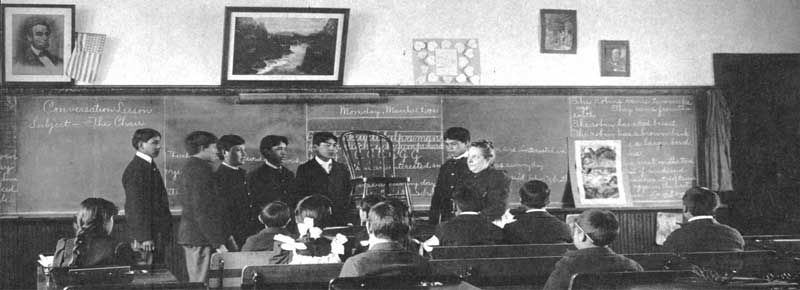
Photo by Karolina Grabowska from Pexels
By Daniel Sherwin – DadSolo.com
It can be difficult to engage students in any subject, but it’s especially challenging for history teachers these days. The good news is there are a wealth of online tools and resources available to help you make history alive in your classroom!
From interactive maps to digital archives, these resources allow you to supplement your lessons with engaging activities that keep your students interested and motivated. Legends of America looks at some of the best online solutions for teaching history!
Primary Sources Online
One of the most useful sources for any history lesson is primary sources: documents or artifacts created during the time being studied. Several websites are dedicated to archiving primary source materials, including the Library of Congress in the US, the National Archives in the UK, and Europeana — the latter containing material from over 50 European countries! These sites provide access to thousands of historical documents, photographs, audio recordings, videos, and other media — and you can use all of them to supplement your lessons.
Further, be sure to take advantage of sites like LegendsofAmerica.com. Our extensive photo galleries tell the stories of many American destinations and legendary figures — the perfect addition to any US history lesson!
You may also want to find helpful PDF tools if you need to download files and documents to include in your lessons. PDFs are among the easiest formats to work with, and you can separate them out to fit your lesson plans accordingly.
Interactive Maps
Using interactive maps is another superb strategy for bringing history to life in your classroom. Sites like Google Earth let students explore historical sites across the globe in beautiful 3D detail, while WorldHistoryMap provides detailed maps showing events throughout history. Younger students might enjoy educational games like GeoGuesser, which challenges players to identify their location based on satellite images from Google Maps.
Digital Storytelling Tools
Stories remain the most powerful medium for teaching. So if your digital storytelling game is lacking, now is the time to spruce it up!
Research the many online tools that allow students to create stories using images, videos, text, and audio recordings. For example, Adobe Spark video lets users easily create stunning videos from scratch or premade templates. Animoto and other helpful tools allow you to create animated slideshows, while Storyboard helps you generate top-notch storyboards. Moreover, help your students edit their video footage into short movies through apps like iMovie or WeVideo.
Virtual Museum Tours

The Bob Bullock Texas State History Museum. Photo courtesy of TSHM
If you want an engaging and immersive experience, introduce your students to virtual museum tours. These tours often provide interactive digital exhibits, 3D recreations, and a slew of other features that can reach learners on a deeper level than traditional textbooks or lectures.
By bringing the past into the present, virtual museum tours can help students better understand how events unfolded, how people lived in different areas, and how certain events impacted society. It can also help make abstract concepts more tangible; seeing objects and artifacts up close helps students to visualize what they’re studying more easily.
History Games and Simulations
Using video games and simulations in history lessons can quickly engage your students with the topic at hand. You can easily find these media with interactive elements, puzzles, scenarios, and other features that put an entertaining twist on historical learning.
Students can gain hands-on experiences as they explore different periods of time via games and simulations. As they progress through levels or complete tasks, they also gain a deeper understanding of how things were done during that era (similar to virtual museum tours) — be it navigation techniques used by sailors or strategies taken by generals during battle. There are many different types of games and simulations available on an array of platforms, including computers, mobile devices, or virtual reality headsets.

Conclusion
If you want to make learning about history fun and engaging for your students, you have countless online tools and resources to choose from. Take time to research primary sources, interactive maps, digital storytelling software, virtual museum tours, and video games. When combined with a bit of creativity, these tools can make history exciting for even the hardest-to-reach learners!
If you enjoyed this article, you can find more helpful content throughout LegendsofAmerica.com!
© Daniel Sherwin – DadSolo.com, for Legends of America, February 2023.
Also See:
Learning Opportunities From Legends of America
Peaceful Retreat – Keep Your Kids Happy During Vacation
You may also like – The Ultimate U.S. History Study Guide from Study.com
